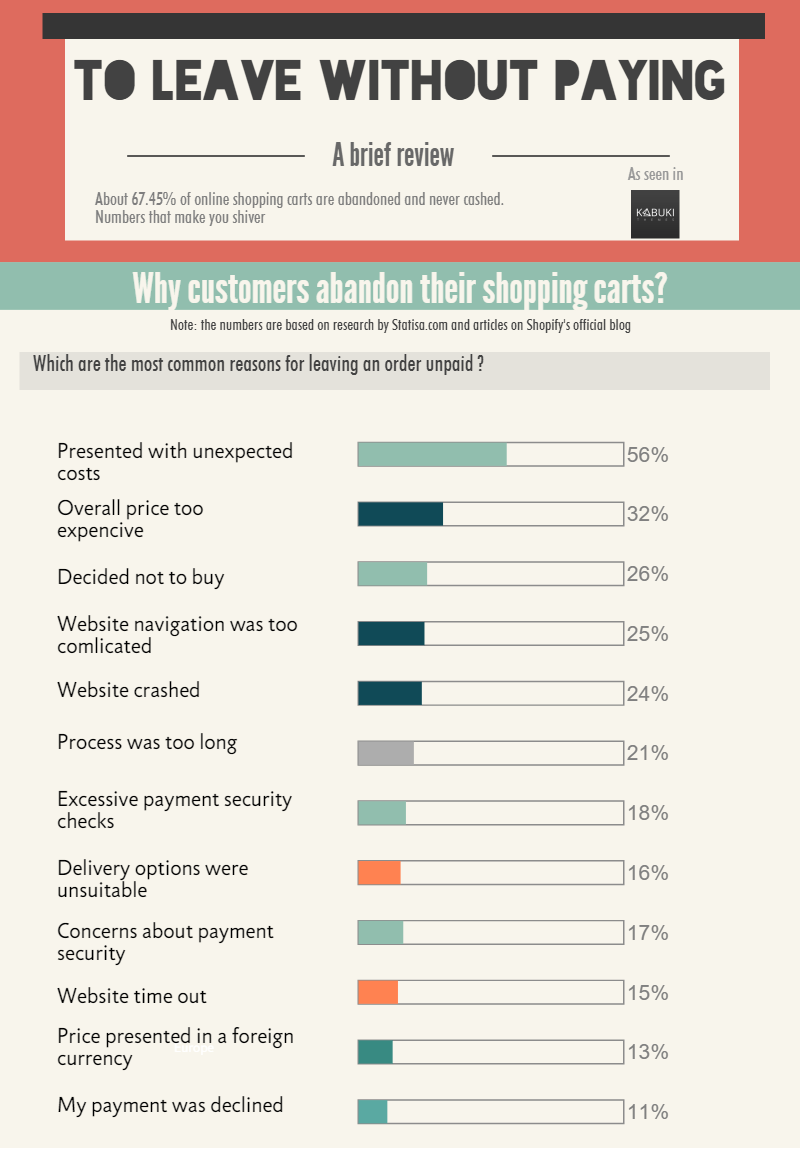
"Talent is cheaper than table salt. What separates the talented individual from the successful one is a lot of hard work."
To elaborate on these words from Stephen King, in the context of entrepreneurship and e-commerce, I would like to say that if you are about to start your online store, your efforts need to be carefully measured and well headed. Lest you find yourself at the beginning, but this time with much less budget and resources to invest in order to start again.
See the Top 7 mistakes online store owner make and our tips and tricks on how to avoid them:
1. Not choosing the right platform
Choosing the right platform for your e-commerce business can be a bit tricky. If you are technical or have someone IT-savvy at your hand you would probably be looking at the the well established open source platforms. These systems certainly have most of the features you would need to start your online store. But they also entail choosing and configuring a hosting space, setting up payment, shipping and tax providers and often tweaking the front and backend of the system. And be assured that problems lurk along the way. So unless you are a developer who thrives in a technical environment full of geeky challenges, you are in for a lengthy and not so productive an experience.
When starting a business you need to get going as fast as possible in order to test your idea. Investing too much in the beginning only to find out that your idea would not work would mean that you have less resources to adjust or keep testing more ideas. And being a true entrepreneur you must avoid this. Instead start lean and practice validated learning until your are successful.
To start quickly and with no effort you need a platform that has a low learning curve, fast and easy setup, robust features, 99% availability, strong support and a vast variety of design options.
Enter Shopify. You might think I am biased to recommend Shopify and you would probably be right. But let's face it. With Shopify you can have an online store in less than a few minutes. You would never have to worry about hosting it or whether it is available while you are away. And you would have all the features that you need: catalog, customer and shopping cart management, payment, shipping and tax methods, language options, marketing, SEO and analytics tools. Sounds too good to be true. Why don't you take it for a spin with the 14 day trial and see for yourself? After that if you disagree, feel free to give us a hard time in the comments below.
2. Design, design, design – spending too much time and money
What many people would do when planning their e-commerce business is hire a designer to turn their vision into reality. Just like calling a doctor when you need a medical examination. But building your online store can be done without specialized, dedicated care.
As everything else in this world, original web design has its price (you're paying per the hour) and takes time. For a serious project it may take up to a few months, time which you should spend bootstrapping and testing your business idea.
The worst part is that no matter how great or expensive your designer is, that won't make any difference if your design idea sucks.
How to avoid this? Someone has already thought about it and has a ready-made solution (theme or template) to offer to someone like you. What is the advantage? A ready-made theme is much, much cheaper than a custom made design and it's yours instantly, with no additional effort. Themes do also allow for customization should you need to adjust them to your requirements. Most themes even come with already integrated plugins, so you would not have to buy them extra or spend additional time and money integrating them. And most importantly at the price of one theme you would also get the support of the design and development team which produced it. So you would have your designer after all, but this time your solution is available right away and at a much lower cost.
3. Having a confusing or lengthy checkout process
I'm sure you want to get ALL your customers' information during the checkout, so you can provide them with the best service possible. But do have in mind that asking for too much information can make your customers abandon their shopping carts. And losing a client at the checkout is like losing a match in the prolongation. It happens in 68% of all cases and a lengthy checkout form is not the only reason for this. To prevent your shop from entering the sad statistics, keep the whole process as short and transparent as possible, introduce additional payment methods which are visible from the start, try to present at least two cheap shipping methods, be flexible with currencies but solid about security. To give you a better idea of how to configure your checkout we have created the following infographic to visualize the top reasons why customers leave without paying.

4. No or Wrong Social Media.
Underestimating social media may be your first and last mistake. It may sound extreme but
"If you don't exist on social media, you don't exist at all"
By social media don't think only Facebook. Free yourself from any doubts and experiment boldly. Twitter applies no penalties based on the the amount of tweets you make, so consider it the best place to announce your limited time offers, flash sales and countdowns! Selling food, handmade-craft items or clothing? Instagram and Pinterest will not only give you a place to shine, but boost your brand awareness by allowing your followers to share, favor and pin your products with your logo and price on. LinkedIn and SliderShare are no longer nice-to-have channels, but established media for professionals and the first place to look if you are selling B2B. So, optimize your profile and use it to share your message. The secret to total social media success - there is no such. Simply combine, be creative and improvise until you find the formula that works best for you.
5. You don't provide any useful or interesting content
Sharing with your clients useful and engaging information is the best and also the cheapest SEO technique that you could use. Ever. No matter how much money you spend on AdWords, your Google page rank and search results won't improve until you start providing your audience with high quality content. By high quality content, I mean everything that may answer your customers' questions, solve their problems or just give them various insight. That can be a short article, blog post, infographic posted on your social networks, a SlideShare presentation or a new feature or a valuable use case of your product . Or simply introduce your audience to the latest buzz in your industry.
6. You're not making the best of your email list
A few years ago, building a strong email list and bombarding it with a ton of advertising emails was pretty much what digital marketing was all about. With spam filters and social media, things have significantly changed.
People are rarely giving their email addresses nowadays without receiving something in return. So consider any given email as an act of trust and value it accordingly.
Most of your email subscribers are probably people who have already bought from your store and it is up to you to make them buy again. So always stay in touch. Keep them updated, ask for feedback or simply send them a personal greeting card for the upcoming holidays.
When preparing a newsletter, make sure that the newsletter is more than just a product catalog.
To engage your audience let them know what is going on with your business, what your future plans are and what kind of deals you are planning to offer. Be personal and as responsive as possible. The trust you earn will pay off and will help you build a strong customer community.
7. Your E-Commerce Store is Not Responsive
Now that's a pity. Smart Insights have announced that mobile browsing is now taking 51% of the global internet traffic (with a tendency for vast increase) and 78% of the local business searches. In other words - not having a responsive design is like having your online store closed for 3 days a week, every week. But you can easily avoid this by simply using a theme/template that is already mobile optimized. If your website is from back in the days when responsive design was a hype rather than a must, no matter how much you would like to stick to your design, you should avoid trying to optimize your website for mobile devices or hire someone to do it for you. A website design which was not thought of with responsive in mind from the beginning is very difficult to amend. There is a great chance that you would waste your time and money on such a venture and ultimately fail. Again to avoid this you can get a ready-made responsve theme to replace your old design and afford your customers with a mobile shopping experience.
In conclusion I would say that that when starting an e-commerce business you are bound to make mistakes. But what you can do is be clear about your business strategy and prepare yourself accordingly with loads of information. This way you will avoid well known pitfalls. When you do fault learn from your failures and then you would be on the steady road to success.
For more tips and detailed information about improving your e-Commerce business, please subscribe to our Newsletter or simply follow us on Facebook and Twitter.




